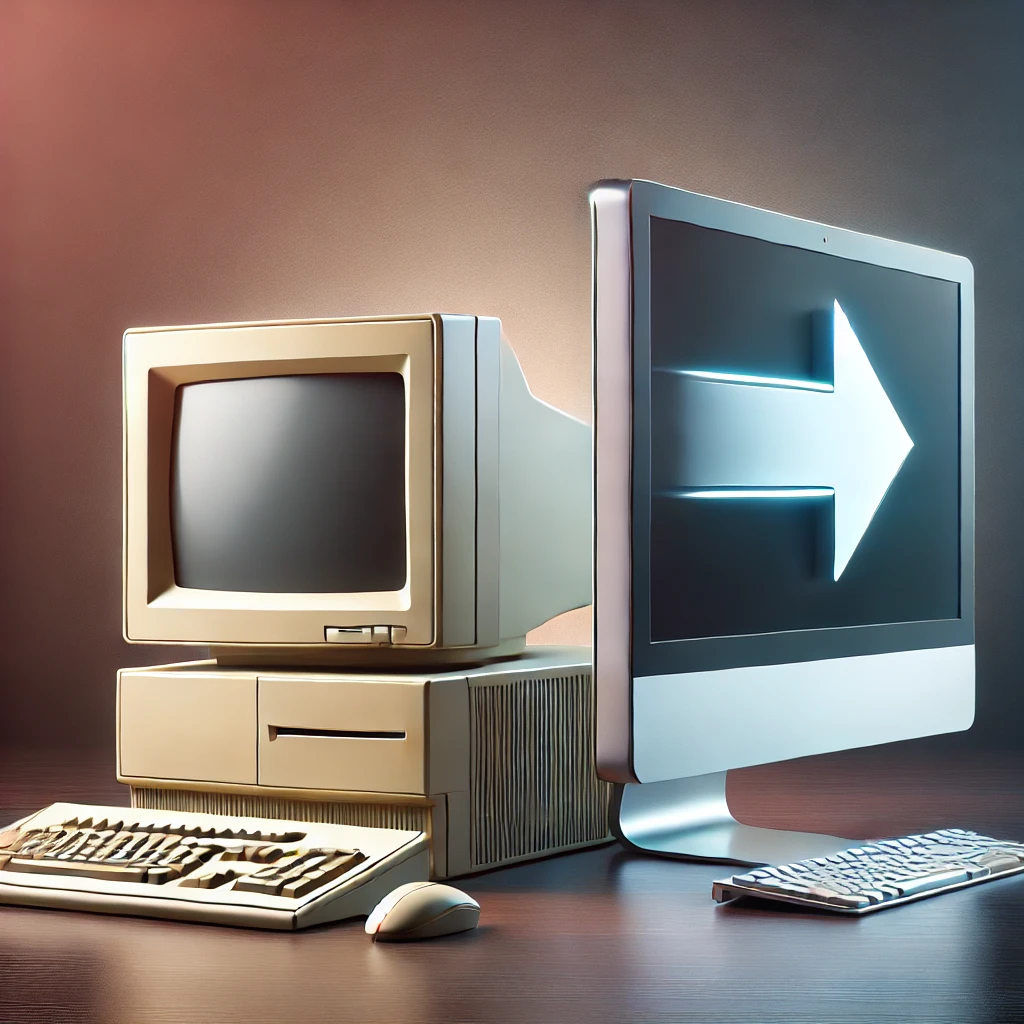When Is it Time for a Tech Refresh: Here’s Why You Shouldn’t Wait to Upgrade

Technology is evolving at lightning speed, and keeping up is crucial. If you’re holding onto old tech, thinking you don’t want to spend the money on upgrades, it might actually be costing you far more than you are saving. Let’s look at why it can save you significant money by initiating your IT asset disposition (ITAD) sooner rather than later.
Why Timing is Everything
Because technology advances so rapidly in our modern world, and some companies like Apple’s planned obsolescence means it's smart to start your ITAD process sooner rather than later. While Apple has apparently stopped this practice, they are not the only ones who do so; some are just more subtle about it. Therefore, the older that asset becomes, especially if it gets put away on a shelf unused, the less value it has.
When you have your old assets refurbished and resold while they are still useful to others outside of your organization, you can maximize residual asset value and help offset the cost of new ones. Plus, reusing old technology isn’t just good for your budget—it’s great for the environment and society by keeping waste out of landfills and recycling streams and by putting technology in the hands of those who might otherwise not be able to afford it.
But the most compelling reason? The cost of holding onto old IT assets often far exceeds the cost of upgrading. In our other articles, we discussed the huge costs of lost employee productivity and the costs of downtime when outdated tech fails and needs repairs. For instance, studies have found that, on average, companies lose about 10.5 workdays per year per employee due to obsolete tech. Multiply that by a dozen, 100, or 1000 employees, and that adds up fast. Now, let’s dive into some additional hidden costs of holding onto outdated assets.
Security Risks
As technology gets better, so do cybercriminals. Delaying your ITAD can leave you vulnerable to security threats. Newer technology comes with the latest security upgrades designed to combat the latest threats. Older tech, however, is like an open invitation to hackers. It often lacks essential security features, updates, and patches. Even if you keep it updated, older systems struggle to run modern security software effectively, making them prime targets for breaches. Studies found that 39% of ransomware attackers gain access due to unpatched system vulnerabilities. Additional studies have found that, on average, older computers are typically three times more likely to have security breaches than newer models. Since the average cost of a data breach was US$9.48 million in 2023, that alone is a compelling reason to refresh your tech.
Tech Inconsistencies and Incompatibilities
Ever tried using old and new technology together? It’s not pretty. Inconsistent tech can cause major inefficiencies, especially in team settings. Employees with newer systems often must wait for those with older systems to catch up. This not only slows down productivity all across the board but also causes technostress. Employees with outdated technology can feel left behind or inadequate, further hurting productivity and increasing employee turnover rates.
And let's not forget about third-party services. Older software might use outdated programming languages or protocols that don’t play well with modern services. Newer applications might demand more computing power than old hardware can handle, leading to system crashes and more headaches.
Increasing Cost of Ownership
Outdated IT assets are also expensive to keep around. Here’s why:
- Obsolete Parts or Repairs: Finding parts for old assets is costly and time-consuming. Once a computer is declared end-of-life, getting parts becomes a hassle. You must source them from computer stores, eBay, or other places and then catalog and store them, taking valuable time away from your IT staff’s more productive tasks.
- Service Contracts: Service contracts often exclude obsolete or end-of-life equipment. This means you may still have to pay for both labor and materials.
- Repair Costs: Repair costs for outdated tech are high. It typically costs about $521 in repairs per year on average for a system older than four years, compared to less than half that for systems less than four years old. And with old IT assets being 2-3 times more likely to break down and lose data, those costs add up fast.
- Lost Business: Outdated technology can harm your brand’s reputation. Clients might lose faith in your ability to meet deadlines or perform tasks efficiently. In fact, 90% of consumers surveyed said they would consider taking their business elsewhere if a company uses outdated technology. This can damage long-term client relationships and future opportunities.
Signs Your Tech is Outdated
Are you wondering if your tech is past its prime? Here are some signs:
- End of Life (EOL): When vendors stop providing support and parts for your tech.
- Lack of Regular Updates: Sporadic updates are a red flag.
- Non-Scalable Software: If your tech can’t handle increasing traffic or demands, it’s time to upgrade.
- Incompatibility: Struggling to integrate with third-party services? Your technology might be outdated.
- Compliance Issues: Outdated software often doesn’t comply with current security and data privacy laws, putting your company at legal risk.
- Age: Is your tech older than 4 years? Chances are, it’s past its prime.
When Should You Upgrade Your IT?
The average lifespan of IT assets is 2 to 4 years, and only very rarely more than that. Beyond this, the likelihood of needing repairs skyrockets, eating into company profits.
We explored studies that surveyed enterprise employees about how old their IT assets were, and we found some interesting results. Only 12% of employees said their tech was less than a year old, 26% said 1-2 years, 33% said 3-4 years, 15% said 5-6 years, and alarmingly, 14% of enterprise workers said that the tech they were using was over 7 years old. That means that only 38% of workers are using tech that is less than three years old.

Image: Employee Survey Data from Compucom.
Final Thoughts
The cost of keeping old technology includes increasing repair costs, downtime, lost productivity, and security breaches. Investing in new IT assets not only boosts performance and productivity but also safeguards your business against potential security threats.
When you decide to start your IT asset disposition depends on your business and technology needs. But if you’re experiencing any of these issues, it’s probably time. The sooner you act, the more value you’ll get from your old IT assets, especially if you work with a managed ITAD provider that prioritizes reuse, promotes a circular economy, and ensures better financial outcomes. Then, when you do buy new tech, avoid brands that build in planned obsolescence so you can get the most out of your IT for as long as you can and so others can benefit from it when it has finished its lifespan at your company.
Find Out How We Can Help
If you are an enterprise, institution, or government looking for ITAD solutions or would like additional information, please contact us at ICT. We can help you get real value from your old assets! Also, check out our white paper on Balancing Tech Spending and Employee Productivity for more information on this important topic.
Selected References
Bondanini, G., Giorgi, G., Ariza-Montes, A., Vega-Muñoz, A., & Andreucci-Annunziata, P. (2020). Technostress Dark Side of Technology in the Workplace: A Scientometric Analysis. International Journal of Environmental Research and Public Health, 17(21). https://doi.org/10.3390/ijerph17218013
Compucom (2023). Data and analysis from our in-depth survey of hybrid worker IT experiences -and insights for improving them Connecting the Dots: Experience, Technology, and the Hybrid Work Environment Research Findings. Compucom White Paper. https://www.compucom.com/
DiDio, L. (2020). Forty Percent of Enterprises Say Hourly Downtime Costs Top $1Million – Information Technology Intelligence Consulting. https://itic-corp.com/forty-percent-of-enterprises-say-hourly-downtime-costs-top-1million/
Deursen, Alexander J.A.M.. (2012). CTRL ALT DELETE Lost productivity due to IT problems and inadequate computer skills in the workplace.
Kirschenbaum Law (undated). Service contracts - are end of life or obsolete parts included? (n.d.). Www.kirschenbaumesq.com. Retrieved June 27, 2024, from https://www.kirschenbaumesq.com/article/service-contracts-are-end-of-life-or-obsolete-parts-included
Martini, D. (2023, February 20). Wasted Talent: Time Lost to (Old) Tech Issues. Electric. https://www.electric.ai/blog/wasted-talent-time-lost-to-tech-issues
Microsoft News. (2018). True cost of not replacing computers revealed in Microsoft study: more than $4,000 each – New Zealand News Centre. News.microsoft.com. From https://news.microsoft.com/en-nz/2018/10/16/true-cost-of-not-replacing-computers-revealed-in-microsoft-study-more-than-4000-each/#_ftnref1
Sophos. (2024). Ransomware Report: Sophos State of Ransomware Report SOPHOS. https://www.sophos.com/en-us/content/state-of-ransomware
Spence, E. (2017). Apple Loop: Apple Throttles Your Older iPhone, Surprise iPhone X Sales, iPhone Killswitch Conspiracy. Forbes. https://www.forbes.com/sites/ewanspence/2017/12/22/apple-news-iphonex-sales-iphone6s-degrade-throttle-power-imacpro-pokemon/
©ICT Inc. 2024-2027. All rights reserved. Unauthorized reproduction, distribution, or use of this article, in whole or in part, without proper attribution to ICT Inc. is strictly prohibited.
